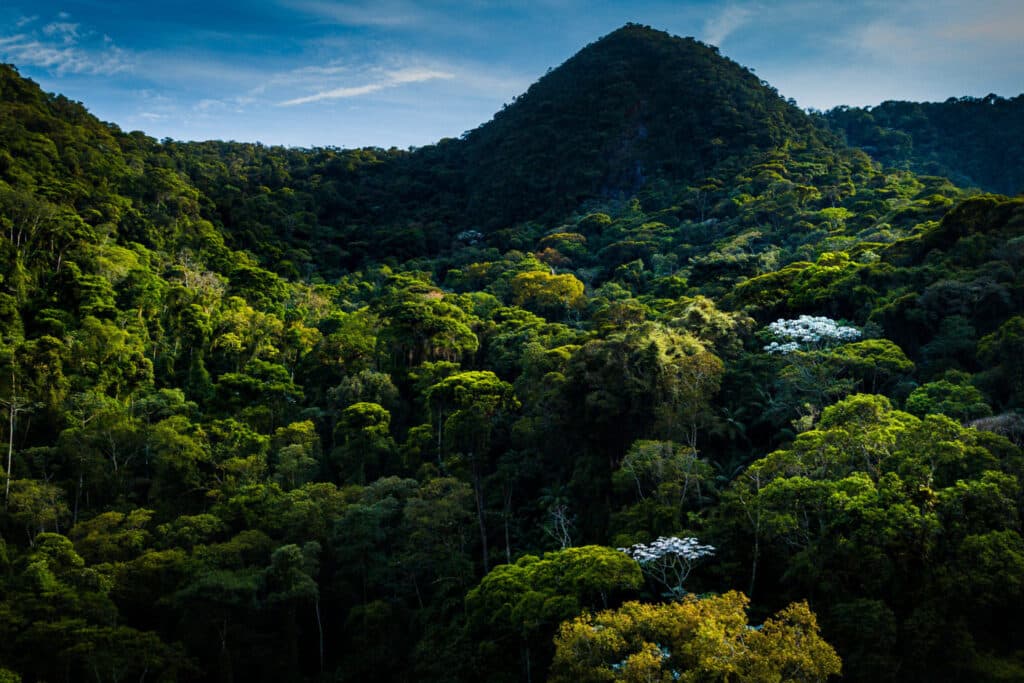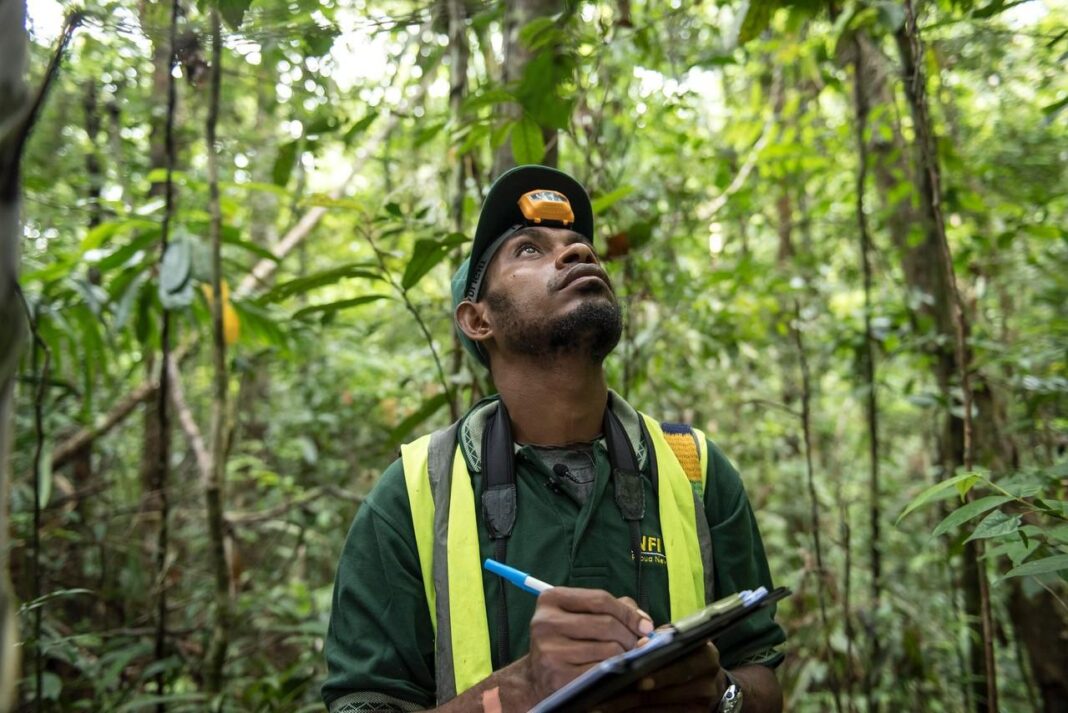Forest carbon markets are vital in helping fund greenhouse gas (GHG) emission reductions to meet the Paris Climate Agreement’s goals.
When companies purchase credits to offset carbon, the money finances projects intended to deliver economic and social benefits on the ground in developing countries.
However, even evaluating the impact of forest carbon offset projects on emission reductions is challenging and involves a complex set of rules and requirements, which have been increasingly subject to media scrutiny.
Forest News reports that experts are working on new methods that satisfy the demand for high-integrity carbon credits, specifically from the REDD+ projects and programmes operating in voluntary carbon markets.
The REDD+ framework helps protect global forests in developing countries
The REDD+ framework is a UN Climate Change initiative established to help protect global forests from the impacts of deforestation and degradation amid climate change. “REDD’ stands for ‘Reducing emissions from deforestation and forest degradation in developing countries.’
The ‘+’ stands for additional forest-related activities that protect the climate, namely sustainable management of forests and the conservation and enhancement of forest carbon stocks.
Under the framework, developing countries can receive results-based payments for emission reductions when they reduce deforestation. According to Forest News, this provides a commercial incentive to drive reductions in degradation.
An effective example is the PEFC FOR-TRADE initiative, which partnered with the UN-REDD Program for their new project, “Sustainable Forest Trade in the Lower Mekong Region.”
This collaboration aims to promote trade, sustainable forest management, and improved governance in Cambodia, Lao PDR, Myanmar, Thailand, and Vietnam. By doing so, it aims to reduce pressure on forests and unlock their potential to support circular practices.
PEFC also supports chain of custody certification for companies that utilise recycled materials, further contributing to circular economy principles.
A new accounting system with improved baseline data
High-integrity forest carbon markets require realistic baseline data to assess the impact of REDD+ initiatives.
Furthermore, carbon credits should be discounted if they only postpone rather than permanently avoid emissions and if emission reductions in one place lead to emission increases elsewhere – a concept known as carbon leakage.
Carbon, or emission leakage, occurs when carbon captured in one area, such as through avoided deforestation, leads to carbon release elsewhere due to increased harvesting to meet demand.
For carbon offset to be effective, they must lead to a noticeable reduction in emissions compared to regular business activities, a concept called ‘additionality.’
“There is essentially a contract involved where some parties promise to reduce forest carbon emissions, and other parties promise to provide recognition, rewards, or compensation for that, so we need an accounting system to implement the contract,” said Erin Sills, a professor of forest economics at North Carolina State University and a CIFOR-ICRAF senior associate.
“But we need an impact evaluation system set up to evaluate how much those contracts are helping the climate.”
During the session, Sills delivered a presentation that compared and contrasted methods for accounting systems and impact evaluations of REDD+ initiatives, illustrated by CIFOR-ICRAF’s Global Comparative Study on REDD+, which collected data from 150 villages in six countries across Africa, Asia, and Latin America.
The market should use impact evaluation studies to promote confidence in carbon offsetting as a viable mechanism for conservation as crediting standards evolve to be better and more forward-looking, according to Sills.
Kevin Brown of the Wildlife Conservation Society (WCS) presented the Forest Landscape Integrity Index, which integrates data on observed and inferred forest pressures and lost forest connectivity.
Research finds that just 40% of global forests have “high integrity”
Based on a collaboration between various universities, institutes and non-governmental organizations, the index has found that only 40% of the world’s forests have high integrity.
“REDD isn’t a utopia – it’s an emergency response,” Brown said in his presentation.
“Questions of scale and speed are equal to integrity. New voluntary carbon market approaches dramatically advance the prospect for integrity at scale.”

Brown also outlined the importance of achieving impact at scale through a new consolidated REDD methodology, thereby removing cost and time barriers to project startup while increasing investor confidence in revenue projections.
Using new technology to provide greater accountability in carbon markets
Verra is a Washington-based organization that aims to provide quality assurance in voluntary carbon markets through its Verified Carbon Standard (VCS) programme.
In April, Wood Central reported on Collective Crunch, a solutions provider approved by Verra to provide near-real-time carbon reporting.
Verra is now developing a new REDD methodology to ensure the integrity of greenhouse gas accounting for individual projects within a jurisdiction, using the most up-to-date science, data, and technologies.
Basanta Gautam, who manages REDD+ technical innovation at Verra, described how measuring the impact of emission reductions is challenging and that refining the methods requires patience, reflecting new insights and learning from the ongoing process.
He said the methods are steadily refined over time, strengthening confidence in forest carbon accounting.
According to Gautam, the new methodology would help engage jurisdictions and governments by establishing relevant jurisdictional baseline activity data and aligning project accounting at the jurisdictional level.
Jurisdictional approaches are the focus of REDD+ implementation in the Paris Agreement and can form the basis of compliance-based carbon markets instead of just voluntary ones.
They are expected to be scaled up and learn from local projects, whose experiences have been compiled in CIFOR-ICRAF’s Global Comparative Study on REDD+.
New frameworks must recognise Indigenous Peoples’s land tenure
Equitable outcomes are also a key component of high-integrity forest carbon markets and involve the Indigenous Peoples, who manage more than a quarter of the world’s land surface.
“For carbon to be high-integrity, it must recognize that Indigenous Peoples deserve the right to ownership of the land, including the carbon, and the right to be informed in a language that they understand,” said Asami Segundo, who belongs to the Kalanguya-Ikalahan Indigenous cultural community in the Philippines and provides technical assistance to the International Land Coalition.
If Indigenous Peoples cannot access carbon finance due to their effective forest management, what other options do they have? she said.

Segundo said there was a need to create funding mechanisms for areas with high forest conservation and low deforestation/degradation rates.
She described how two Indigenous territories in the Philippines last year tried to enter the carbon market but were paradoxically disqualified from REDD+ because they had too low deforestation and degradation rates due to their effective land stewardship.
Today’s crediting standards need to provide an approach to demonstrate the additionality of their existing stewardship.
“Carbon credits should be ethical,” Segundo said.
“In a sense, high-integrity carbon is ethical carbon. There is no climate justice without human rights.”
Sven Wunder, principal scientist at the European Forestry Institute and a CIFOR-ICRAF senior associate, presented the results of a meta-study on the effectiveness of REDD+ and found that the forest impacts were statistically significant but modest in size, just like for other conservation tools.
He said REDD+ could impact more if activities spatially targeted high-threat, forest carbon-dense areas.
These may include any high forest area under imminent threat, such as in the “Arc of deforestation” of the Amazon (e.g. Mato Grosso, Acre, Para, Rondonia) or at other forest-agricultural frontiers (e.g. parts of Kalimantan, Papua), according to Wunder.
“REDD performs at least as well – or as poorly – as other conservation tools, but there is little analysis of its cost-effectiveness,” he said.
“Our research points to various design and implementation recommendations to make REDD+ actions more effective, which would also be needed in its ongoing scale-up to the jurisdictional level.”






